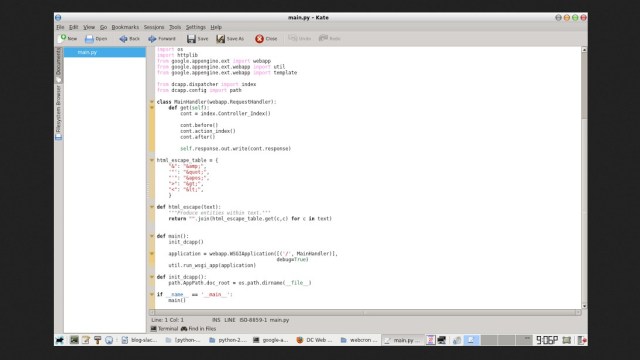


- #Download the google app engine sdk verification#
- #Download the google app engine sdk code#
- #Download the google app engine sdk trial#
- #Download the google app engine sdk free#
This is the unique identifier for the app This is the project ID which you should never change. It is important to note the following crucial parts of the file. This file is a basic markup file that stores information (some metadata) about the app. Here is a description of the various files.
#Download the google app engine sdk free#
However, feel free to choose the one you prefer. Open your app folder in the text editor of your choice.
#Download the google app engine sdk code#
It is finally time to look at the lines of code which are running this webapp. Alternatively, you can manually go to the browser and use the port specified to access the app.Īs long as you see the above screen, you are all set. This should take you to the browser, and you should see the hello world text appear in your browser window. Once the Browse button becomes clickable, click it. Wait for a few seconds until you can hit the Browse button. Select the app and hit the run button on the window. This can be done by simply running the app locally. Run the app locallyīefore you go ahead and make some changes to the app, it is important to check whether or not you have executed all the above steps correctly. You should also check that you now see some files in your local storage (the directory you chose in the screenshot above) after this step. Hit the create button, and you should see your app listed on the window that follows. Make sure you select the Python 2.7 as your runtime engine. Also, provide the folder (local destination) where you wish to store the app locally. Go to Google App Engine launcher and create a new application.Įnter the project ID of your newly created app. This will allow you to make changes to the app locally and deploy it whenever you wish to. The next step in the process is to fork the app on your local machine. Hit the create button and Google should take a few minutes to set up all that is necessary for your newly created app. Give your app a name and make a note of your project ID. Follow the screenshots below to create a new project. The next step is to create a new Python project that you can work on. Most of the hard work is complete after a successful sign-up. Follow the sign-up process and go to your App Engine dashboard.Here are the steps you need to follow to sign-up:
#Download the google app engine sdk trial#
You will not be charged during the trial period as long as you do not cross the credit limit offered.You will not be charged during the sign-up process.
#Download the google app engine sdk verification#

Google App Engine is a great way to get started with learning web development. As companies such as Google, Amazon, and Microsoft provide more and more easy-to-use tools to build and deploy applications, it makes more sense to use the services and tools provided by them instead of building things in-house and hosting it on-premise. , growth in the number of web-based applications and frameworks in the recent times is astounding. By Karan Asher A quick guide to deploying your Python webapp on Google App Engine Image credit.


 0 kommentar(er)
0 kommentar(er)
